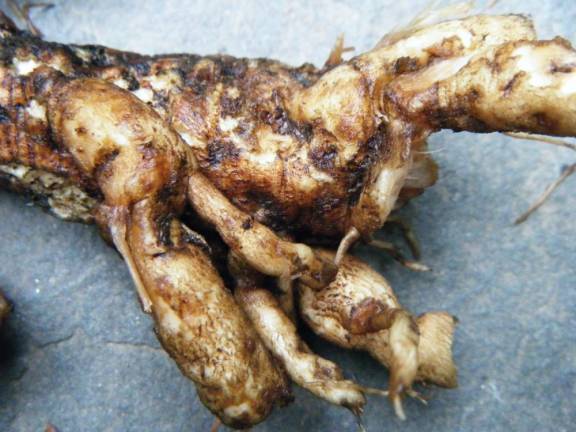Beneath the burs, a sustaining taproot


The shortening days and cooling temperatures signal to plants that it’s time to store up, direct energy to their rootstock and prepare for winter. Partaking of wild roots, which in autumn are particularly nutritious, provides us with valuable sustenance while also attuning our bodies to the change of seasons.
One of our most nutritious and delicious wild roots is burdock. Nutty and slightly sweet, it contains vitamins C, B, E, potassium, sulfur, silica and manganese. Burdock supports liver function and also contains the prebiotic inulin, which feeds healthy gut flora, in turn supporting not only digestion but immunity. It is also a breeze to find! A non-native weed, it shares space with people. Look for burdock along the border of your property, in the horse pasture or out behind the barn. There are two species you are likely to find: Arctium lappa or Arctium minus. They look nearly identical and both are equally good to eat.
Burdock is a biennial, beginning in early spring as a basal rosette of ruffly heart-shaped leaves with woolly undersides that, by this time of year, have grown to over two feet long and one foot wide. The leaves die back over winter and the following spring, the plant sprouts again. By midsummer, it will stand nearly six feet tall, sporting spikey thistle-like flowers that transform to the familiar burs that we find tangled in our sweaters and pup’s fur. First year plants possess the best roots for harvest. Once burdock has gone to seed, it’s completed its life cycle.
Burdock’s taproot plunges deep into the earth and holds fast, so digging burdock is sure to keep you toasty warm on an autumn’s day. Pull out your trusty digging knife or shovel and get to work, cutting a circle around the root. Moist soil will make for easier work. Once you’ve loosened the soil, take hold of the root crown, and with some good wiggling and tugging, free its grip.
Wash, peel, dice, then simmer in hot water for a tea, sauté, or toss in soup for a delicious addition to any meal. To enjoy burdock all winter long, harvest numerous roots, dice and dehydrate. Burdock has long been considered a food to nourish and sustain the body, and the time spent close to the earth, hands in the dirt, to harvest this root, is medicine in and of itself.